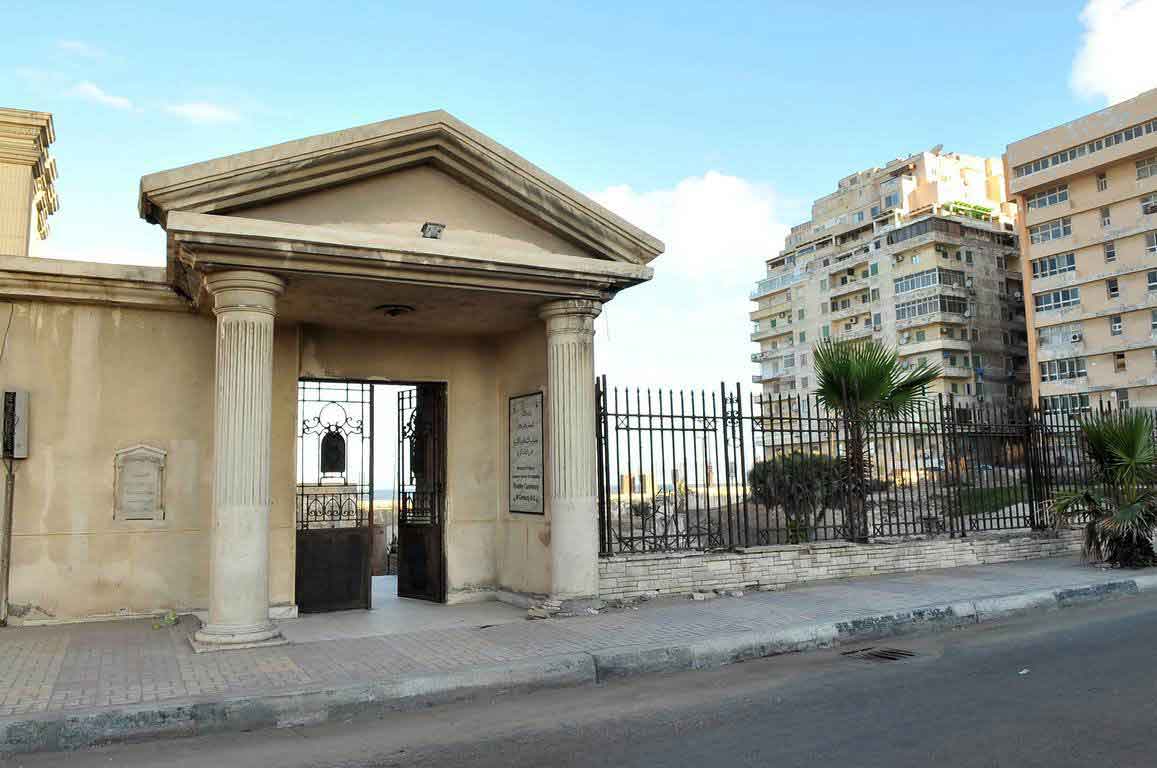
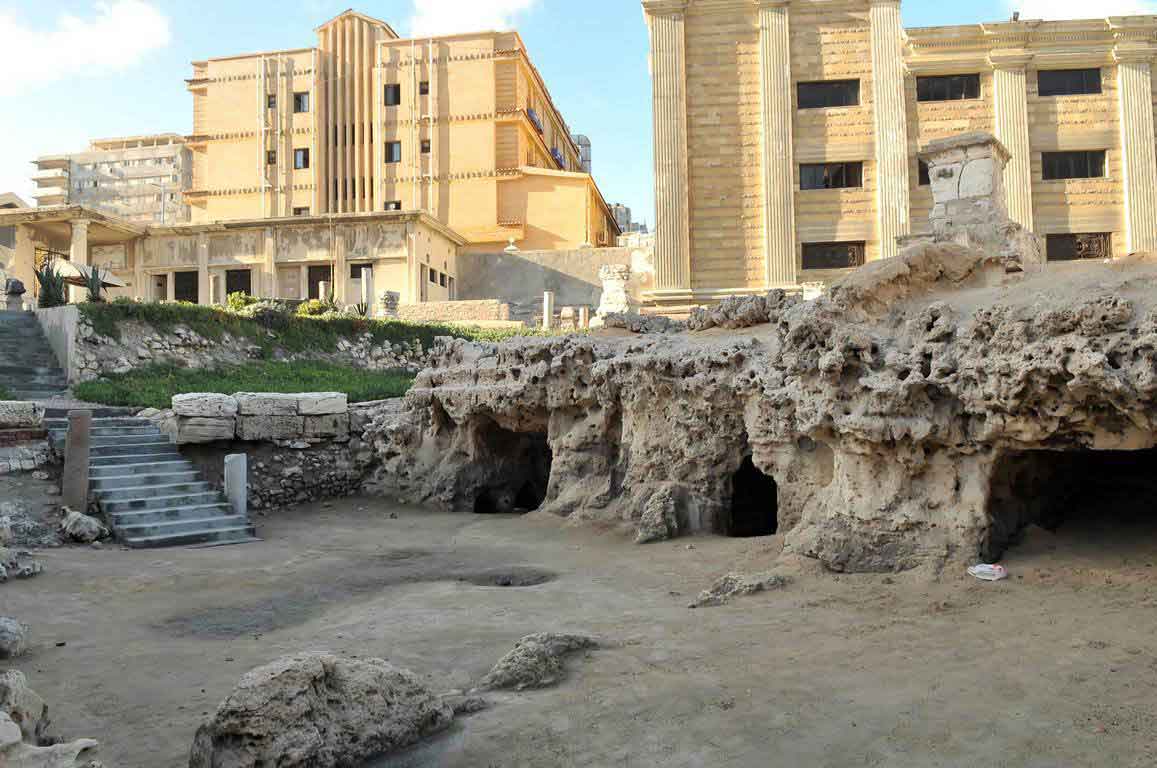
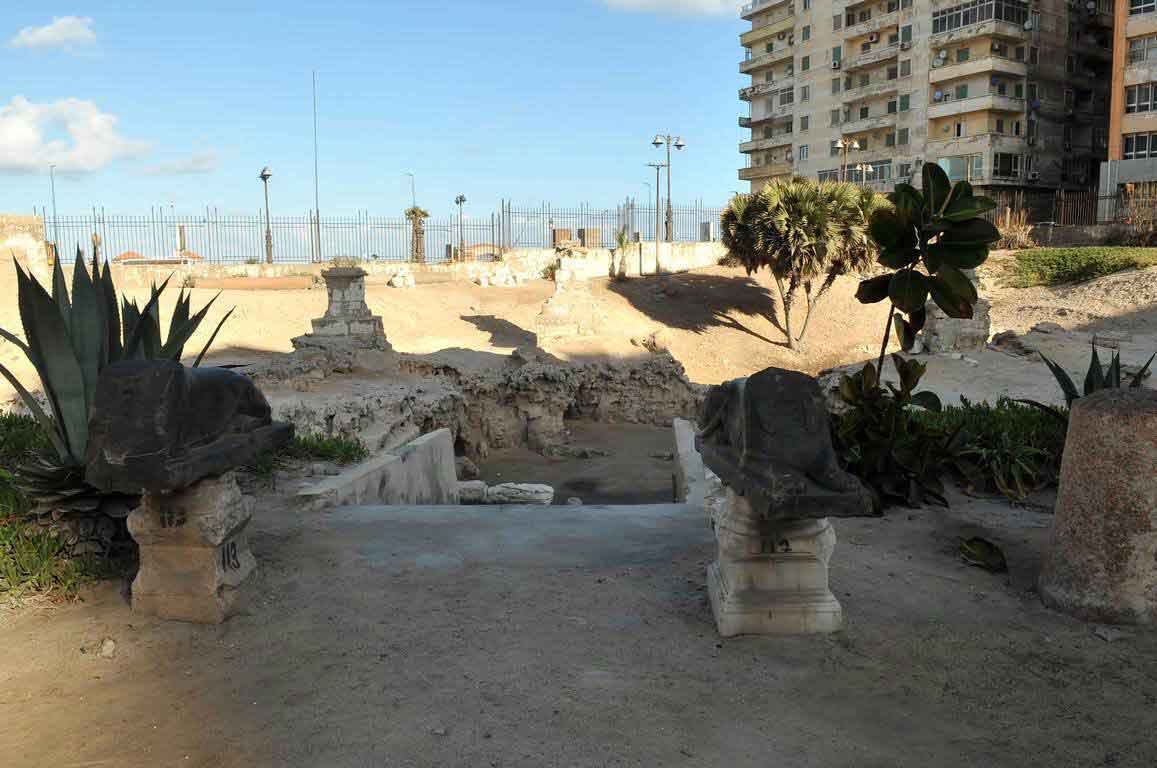

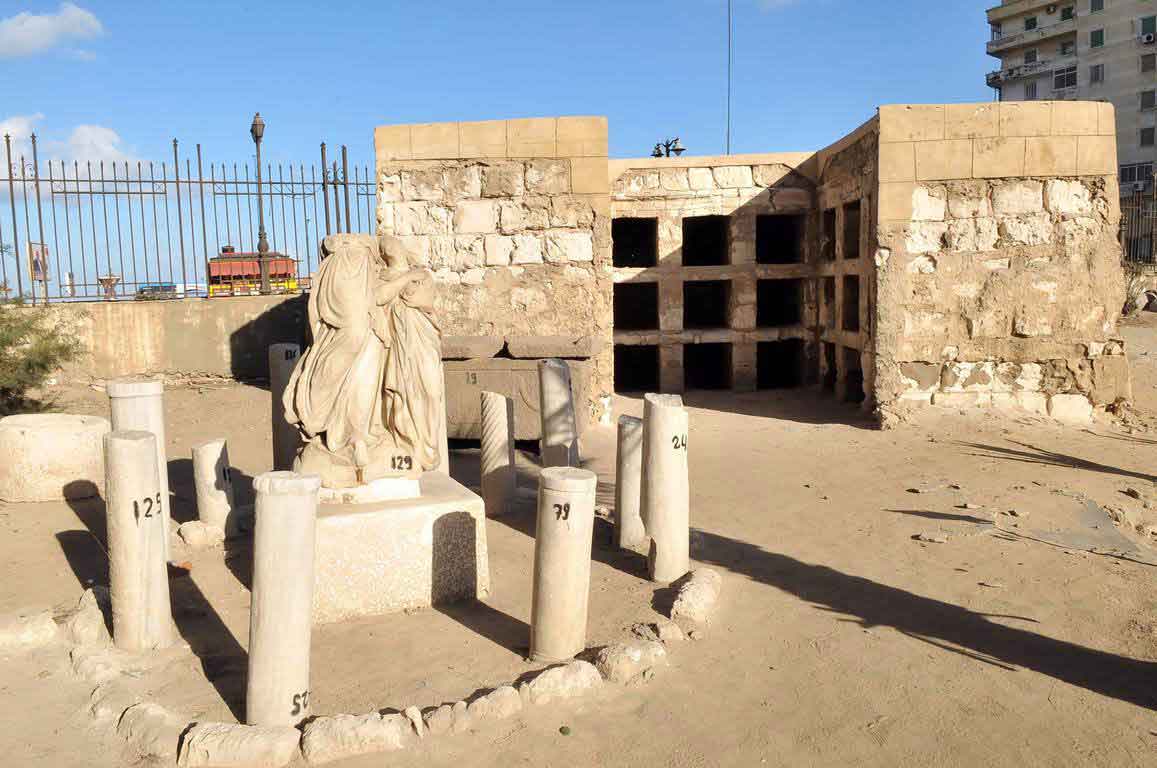
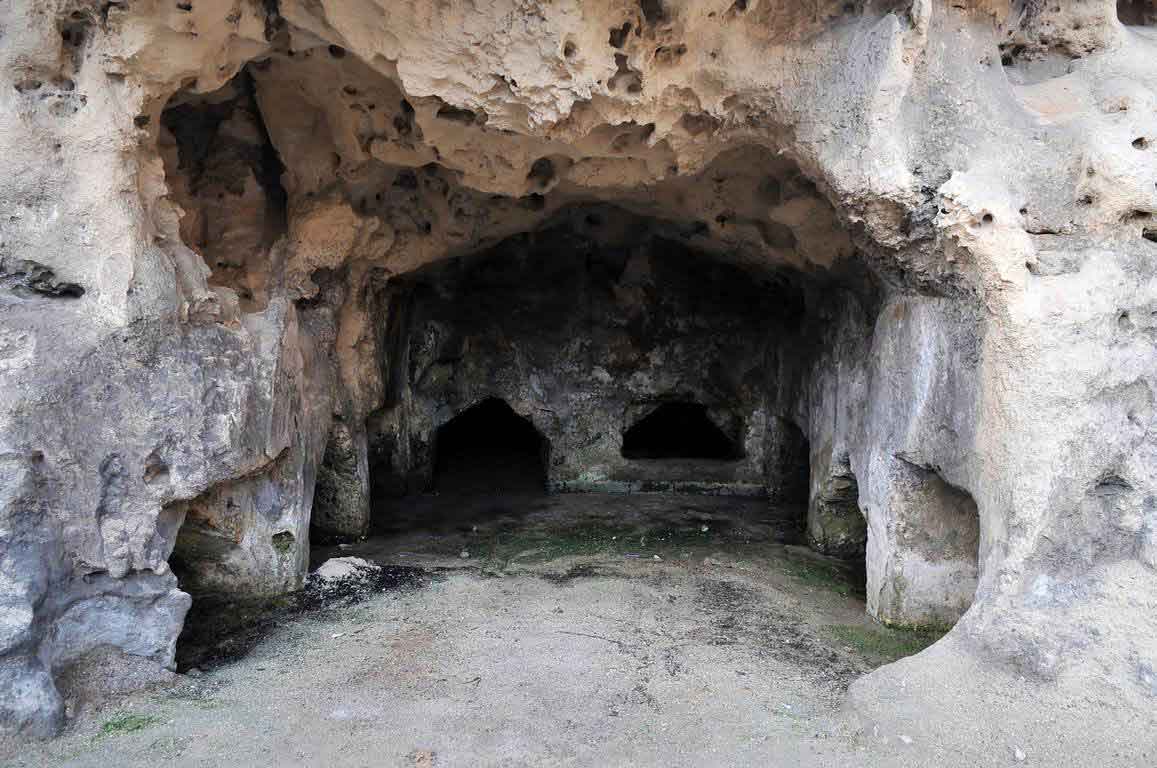
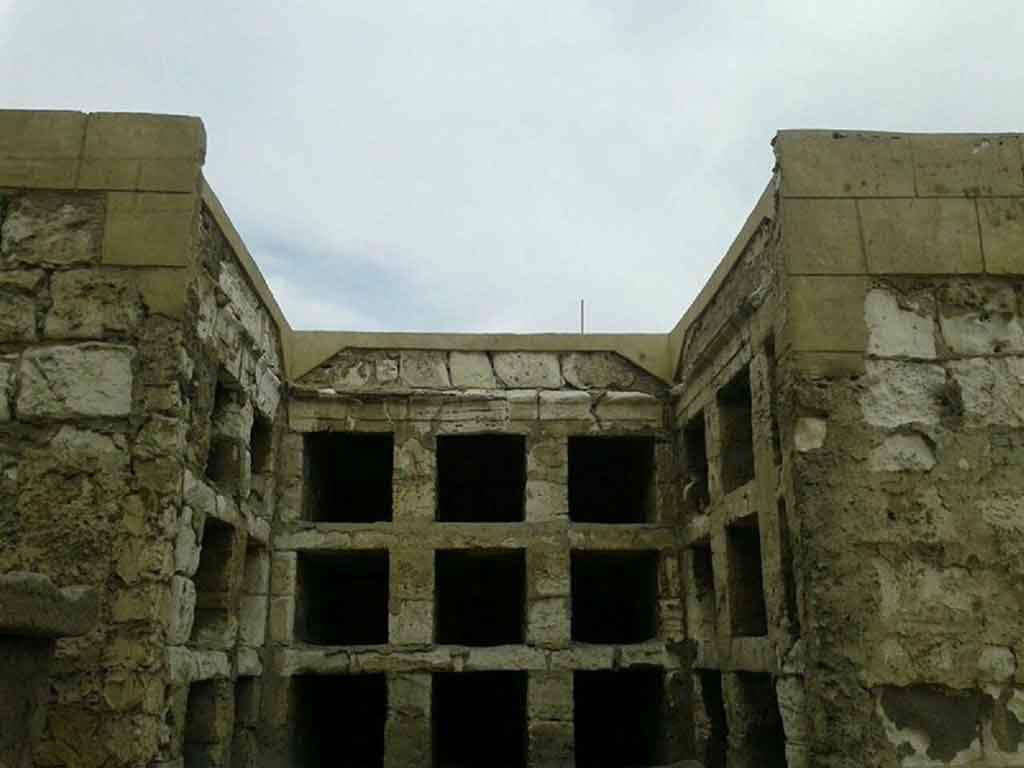
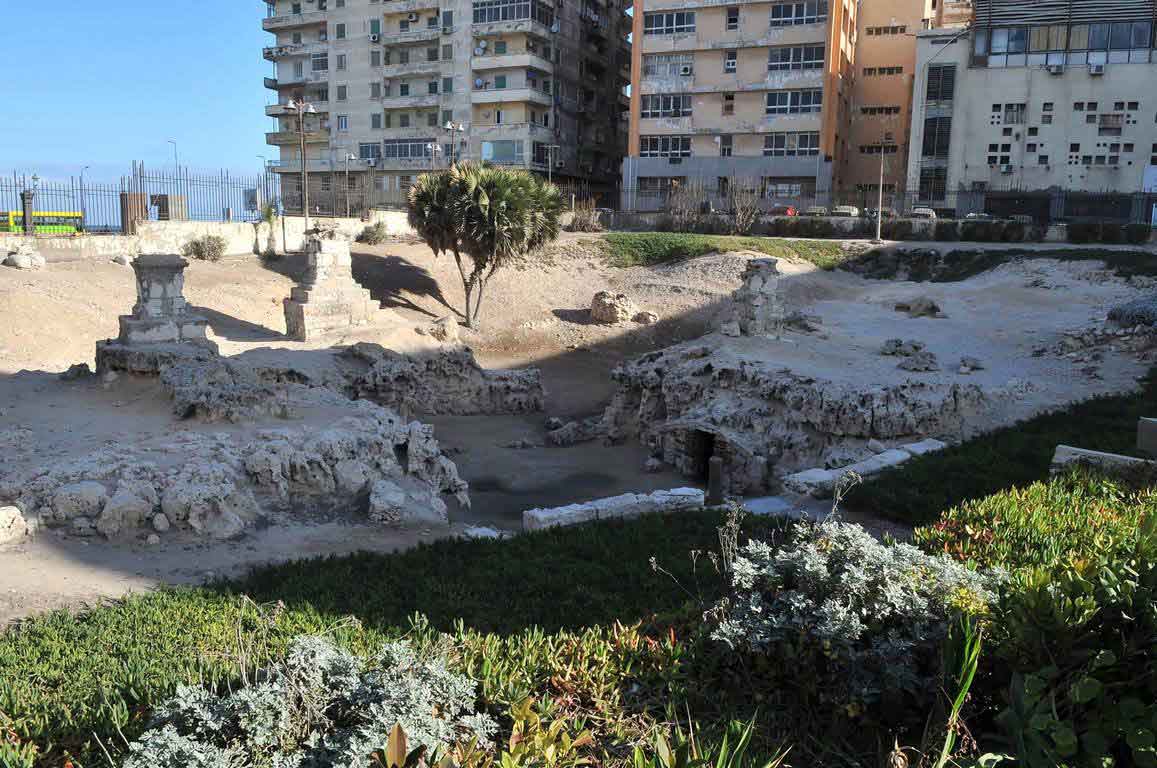
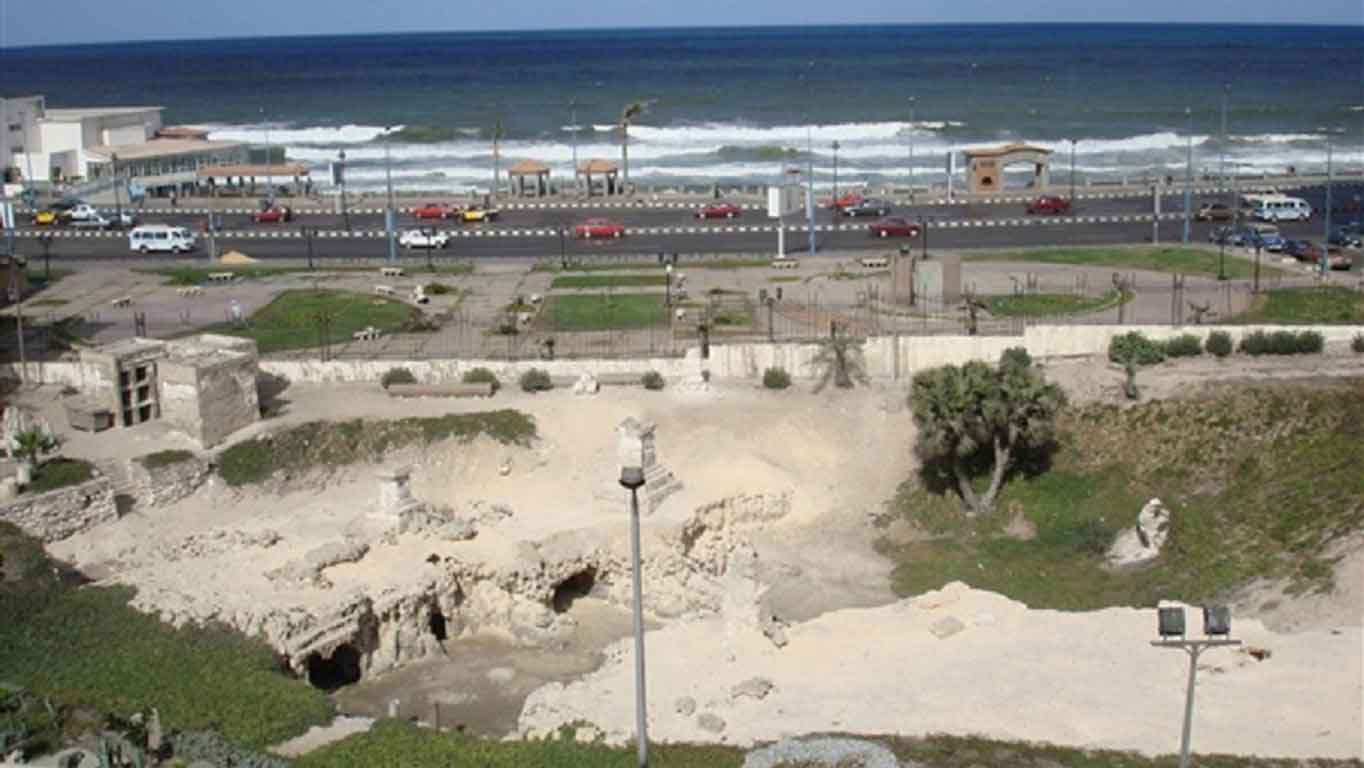
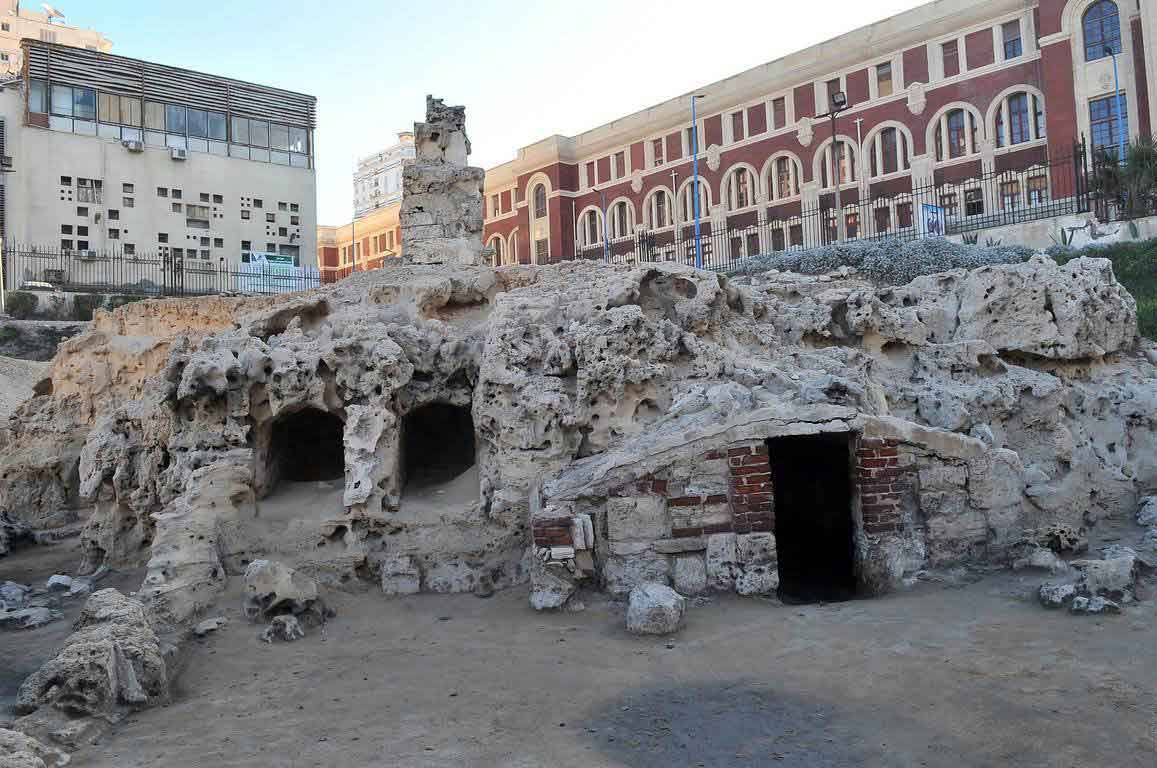
This necropolis was carved on a rocky plateau and above it is one of the oldest cemeteries of ancient Alexandria because of its proximity to the walls of the Ptolemaic city. This is where archaeological masterpieces of colorful statues of women and girls were found, and these statues are displayed in the Greco-Roman Museum.
The main cemetery consists of an entrance that leads to a showroom and from there to another room and then to an open courtyard is on the east side an entrance that leads to a front room and from there to a burial chamber and the cemetery consisted of initially an open courtyard and an anterior chamber and then a burial chamber with two carved beds. On the rock, the cemetery was designed in the style of a Greek house, which usually consisted of an entrance, a front room and a interior room, dating from the first half of the third century BC.
It began as a private cemetery for a wealthy family and then expanded to become a public cemetery later. Other portions were added to the cemetery that did not exist before and there are rooms that are more recent than the original cemetery era. It was found in one of the rooms (pots) dating to the third century BC, as well as in two other rooms.
